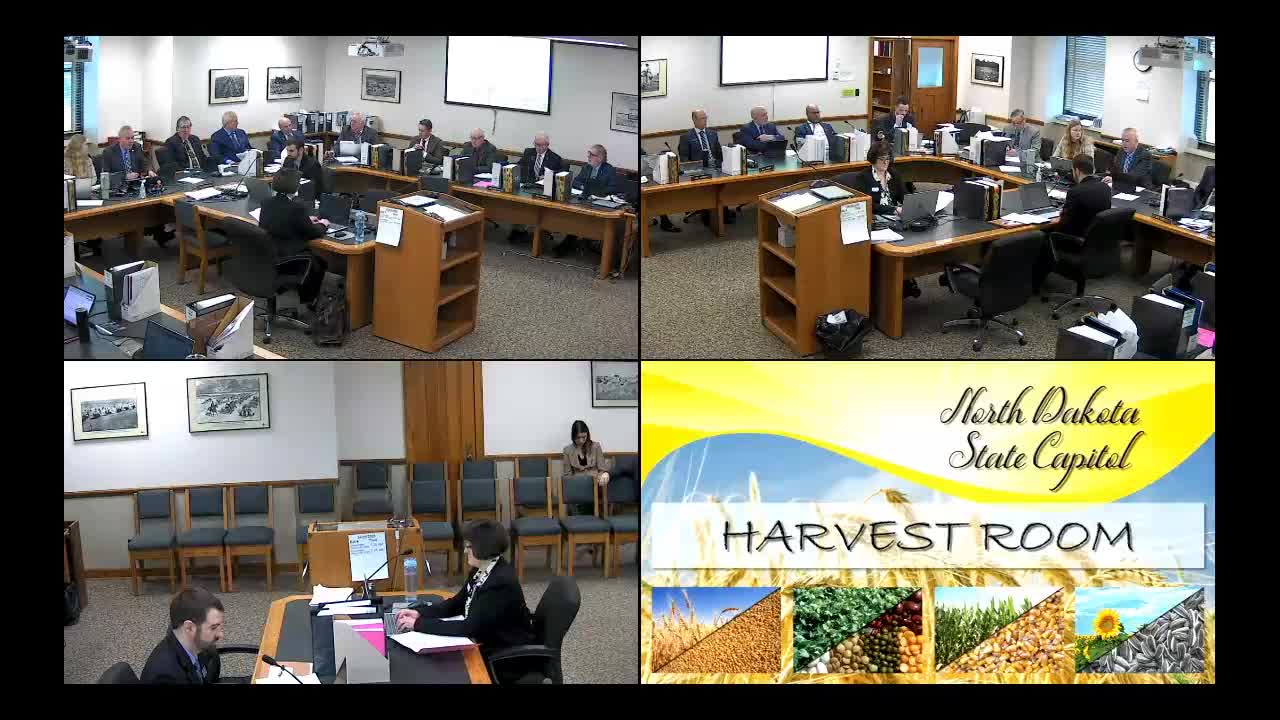North Dakota Senate debates property tax caps and local funding complexities
April 25, 2025 | Appropriations, Senate, Legislative, North Dakota
This article was created by AI summarizing key points discussed. AI makes mistakes, so for full details and context, please refer to the video of the full meeting. Please report any errors so we can fix them. Report an error »

In a recent meeting of the North Dakota Senate Appropriations Committee, discussions centered on the complexities of property tax relief measures and their implications for local school districts. The meeting, held on April 25, 2025, highlighted the ongoing challenges lawmakers face in balancing tax relief with funding for education.
One of the key topics was the potential capping of property tax levies. Senator Meyer expressed concerns that without a cap, the burden on taxpayers could increase, particularly as school districts account for nearly half of property tax revenues. He emphasized the need for a solution to prevent backfilling, which could undermine the effectiveness of any tax relief measures.
Senator Mather raised a broader question regarding the necessity of keeping two competing bills alive in the legislative process. The intent, as clarified by committee members, was to ensure that the Senate's preferences for property tax measures could advance, even if one bill did not survive.
The committee also discussed the financial implications of different approaches to property tax relief. Senator Thomas explained that one version of the bill would cap property tax levies at 60 mills, with the state covering the difference between the capped amount and what would have been collected without the cap. This approach, while beneficial for taxpayers, raises concerns about the state's increasing financial responsibility for local education costs.
The discussions revealed a tension between providing immediate tax relief and ensuring sustainable funding for education. Estimates indicated that adopting the House's version of the bill could cost the state an additional $17 million annually, raising questions about the long-term viability of such measures.
As the committee continues to navigate these complex issues, the outcome of these discussions will significantly impact North Dakota taxpayers and the funding of local schools. The next steps will involve further scrutiny of the proposed measures and their potential effects on the state's budget and educational system.
One of the key topics was the potential capping of property tax levies. Senator Meyer expressed concerns that without a cap, the burden on taxpayers could increase, particularly as school districts account for nearly half of property tax revenues. He emphasized the need for a solution to prevent backfilling, which could undermine the effectiveness of any tax relief measures.
Senator Mather raised a broader question regarding the necessity of keeping two competing bills alive in the legislative process. The intent, as clarified by committee members, was to ensure that the Senate's preferences for property tax measures could advance, even if one bill did not survive.
The committee also discussed the financial implications of different approaches to property tax relief. Senator Thomas explained that one version of the bill would cap property tax levies at 60 mills, with the state covering the difference between the capped amount and what would have been collected without the cap. This approach, while beneficial for taxpayers, raises concerns about the state's increasing financial responsibility for local education costs.
The discussions revealed a tension between providing immediate tax relief and ensuring sustainable funding for education. Estimates indicated that adopting the House's version of the bill could cost the state an additional $17 million annually, raising questions about the long-term viability of such measures.
As the committee continues to navigate these complex issues, the outcome of these discussions will significantly impact North Dakota taxpayers and the funding of local schools. The next steps will involve further scrutiny of the proposed measures and their potential effects on the state's budget and educational system.
View full meeting
This article is based on a recent meeting—watch the full video and explore the complete transcript for deeper insights into the discussion.
View full meeting
